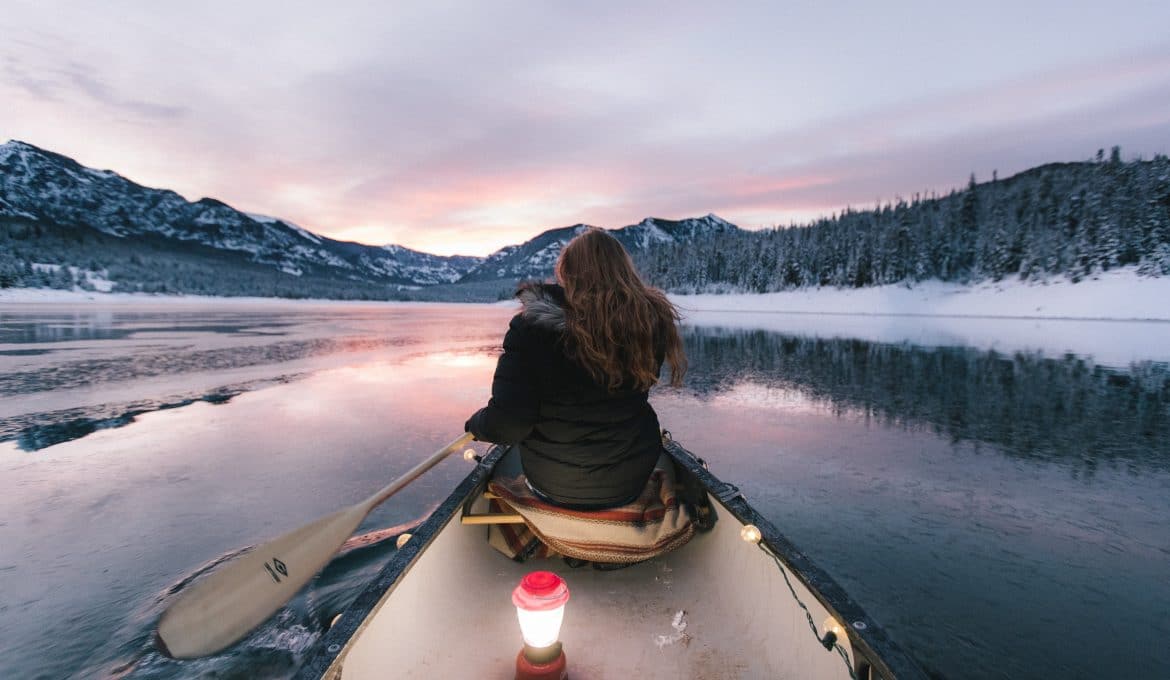Most people store their kayaks in the winter because they don’t even think about going out on the water. The truth is, you can kayak anytime, as long as you have the right gear. Here’s what you need to stay safe and warm while paddling all winter long.
A Wetsuit or a Drysuit
Wetsuits and drysuits work differently. A wetsuit traps a thin layer of water between your body and the suit, which keeps you warmer. These can work in cooler temps, though eventually, you will want a drysuit instead. The drysuit is a layer of nylon coated in waterproof material, sealed off in such a way that water can’t get in. It doesn’t offer any insulation, but it will keep the water from getting to your clothing.
Most winter kayakers choose a drysuit. Get one with a relief zipper, or you’ll be sorry later. You can also choose a separate top/bottom combo, or get a top that integrates with your kayak’s sprayskirt. This last option is great if you know you’ll only use the drysuit for kayaking.
Insulating Layers

If you have a wetsuit, you may just want to wear a swimsuit underneath it, as it will do a lot to keep you warm. If you, like most winter paddlers, choose a drysuit, you’ll need to wear warm clothing under it. The drysuit itself is only a waterproof layer. It’s not insulated in and of itself.
You can start with long underwear and put a winter jacket over it (all under your drysuit, of course). You can also buy base layers that are specially designed for water sports. These are usually water-resistant and will wick sweat, to help you stay warm.
Water-Resistant Gloves
Some paddlers prefer neoprene gloves or mittens because they work the same way a wetsuit does. However, these can make it harder to do things like hold your paddle or get into any bags you have stored on your kayak. The technology for these is developing, so they are getting warmer and easier to use all the time.
Other people prefer to bring several pairs of wool or down-insulated gloves and mitts when they paddle in the winter. When one gets cold, they just switch. This works well for a shorter paddle but is harder to handle if you’re going long distances over several days.
Do look into poggles, too. These are basically mittens that attach to your paddle. Some people say that they make it easier to keep a good grip on the paddle.
A Hat
That old adage about losing most of your heat through the top of your head is true! Make sure you have several warm, fitted hats for your expedition (in case one or two get wet). You can also invest in a neoprene hood, which fits tight to your head and really helps keep out the cold. These are especially useful if you plan on going in the water.
Warm Footwear
Wear the warmest waterproof footwear that you can fit inside your cockpit. Some people prefer neoprene booties over wool socks, while others will wear waterproof mukluks or something similar. Still others wear calf-height rubber boots over several layers of warm socks. If you have warm, waterproof shoes you love, use those. If not, you may need to try several options until you figure out what will work best for you.
Hot Beverages
One of the best ways to warm up is with a hot drink. Get a good thermos or storage system and bring along coffee, tea, or hot chocolate to warm you up on your way. You can usually fit a thermos in your dry bag in your kayak, so it’s easily accessible throughout your trip. If you start to get shivery, take a couple of swallows and let the liquid warm you up. If you don’t want to bring it with you, at least keep a thermos of warm beverage in the car so you can get warm when you’re done.
Emergency Gear
It’s always a good idea to keep an emergency kit in your kayak, but it can be even more important in the winter. Include:
- An extra set of warm clothes, preferably in a dry bag
- Your rescue stirrup
- A small first aid kit
- An emergency blanket
- An emergency paddle
- A firestarter
- Communication equipment
If you get in trouble on the water or far from home in the winter, things can get dire fast. Dealing with the cold makes surviving even harder than it would be otherwise. Having these things along gives you the best chance of getting out of a bad situation.
There’s always more winter weather gear that you can buy for your kayak. You can look into things like a neoprene skirt, an icepick, a folding saw, and more. What’s listed here will get you started, so you can go out and figure out what else you need or want. Happy kayaking!





